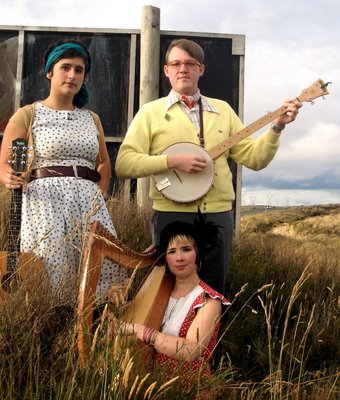In Walter Percy’s The Moviegoer, Binx Bolling views movies as a sort of validation. In a constant fight against becoming an Anyone, lost in deadening everydayness, Binx shambles together a unique reality from the movies he sees. For Binx, movies situate time, place, and even character. A neighborhood only becomes real–becomes solid–when it is featured in a film. By extrapolation, a person only becomes real when they can be identified as a specific character.
The Moviegoer, a novel, was assigned to my Literary Nonfiction class, one focused on culture and criticism. At first, I thought this was kind of weird. As I read however, I realized we were reading not for the merit of the writing (of which there are many), but for the way in which Binx related to movies. For Binx, popular art–the movie–was not a reflection of life, but a model for it. This is somewhat of a disturbing idea. Is all pop art a sculptures, from which we are supposed to find reality?
I’m not much of a moviegoer, but I do listen to a lot of popular-ish music. I decided to explore the relationship of music and listener, in the context of the latest album that I’ve really enjoyed: Polka Dot Dot Dot.
I began at the basics.
Polka Dot Dot Dot’s first full length–Love Letter to New Zealand–was released of off Bicycle Records, the Olympia based label that epitomizes everything cool about the new “Weird America”. It’s an aesthetic that I have an affinity to. Like Binx, for who the whole movie going process was part of the experience of the art, the context in which the art is delivered is not without an effect. I liked the band before I even heard them. Packaged in environmentally-friendly looking cardboard, the design was simple and earthy. The picture of the band showed a somewhat homely trio standing in a tall field of wheat. They stood awkwardly with their eclectic group of instruments (guitar, harp, banjo) and their frumpy prairie clothes, and I liked them all the better for it. They looked like how I wanted to be: simple, caring little for modern times and trends, living in their own fragile nostalgia.
As I considere my initial reaction to the CD, I realized I was off to a bad start. Part of my appreciation of the band definitely stemmed from an attraction to the lifestyle they represented. I was like Binx turning to Gregory Peck as the model of masculinity.
But what about the actual music?
As the cover implies, Polka Dot Dot Dot is a folk band. Kind of. The tracks are sparse. Often comprised entirely of vocal harmonies and minimal alternating twangs and pings of the banjo and the harp. On songs like “Little Finger” it is impossible to miss the band’s Americana roots. But Polka Dot Dot Dot is also tapping into a much older tradition. The song “Rose Rose” is pulling from Medieval court music traditions. The rise and fall of the pitches, the vocal rounds, the stark contrast in the harmonies, and the lyrics all recall late Anglo-Saxon Medieval secular music (Aha! The harp makes sense). This is a sinker for me. I love Medieval art, music included. When I was younger I would walk around my garden, pretending to be a Medieval maiden in search of knights and unicorns. Combining neo-folk and Medieval music? These guys are golden.
Ok, circumstances aside, the music on its own merit quickly drew me in. As early as my initial album listen, I got lost in the world of the music, its sound. Stylistically basic, the sound is surprisingly rich. The vocals are warm, full of harmonies that fold onto themselves, pulling the listener along. The instruments are used sparingly, but they maintain a steady rhythym and a contextual flow from song to song. The latter half of the album builds on the skeletal foundation of the stringed instruments, incorporating bird chirps, typewriter taps, and a variety of additional jingly instruments. Rather than alienating–as I often find abstract sampling to be–the effect is one that brings me closer to the music. An intimacy is gained. The sounds are part of the story. In “The Letter” the clacks of a typewriter conjure images of a sundrenched summer day in the nineteen thirties, of someone writing to a beloved. Love Letter to New Zealand is a simple album, but is also one that draws you in. The songs tell bittersweet stories of loss and the natural world.
Ok, I was charmed by the music. Does this mean that it’s the auditory equivalent of Payton Place?
I think not. Even though Love Letter to New Zealand is a beautiful album, an album that I like and admire, an album that I can lose myself in, it never replaced my sense of reality. In fact, it rather acted as an escape from my reality. I lost myself while listening, but I never replaced myself with the nostalgic romance of Polka Dot Dot Dot’s model.
But why? How can I forget myself in the world of the music, but still emerge unmarked? I can’t extrapolate to all music, but in the case of Polka Dot Dot Dot I think it has to do with their own strong sense of nostalgia. Everything, from Medieval refrains to the sound of a typewriter, recall an earlier age. Each and every song on the album carries strong memories of the past. The world of the album may be seductive, but is also one that no longer exists outside of the music. It is therefore very easy to separate onself from the musical aesthetic. One may sojourn into a different place when listening to the album, but there is always the nugget of a thought: This song is telling an old story. And a story it remains. Unlike the blunt manliness that Gregory Peck portrayed in his films, Polka Dot Dot Dot offer no model for living. The farthest I can draw from the album is a sense of longing, which (sadly) I think was there to begin with. The world of Polka Dot Dot Dot is contained within the elipses the name implies.
Phew.


Leave a Reply